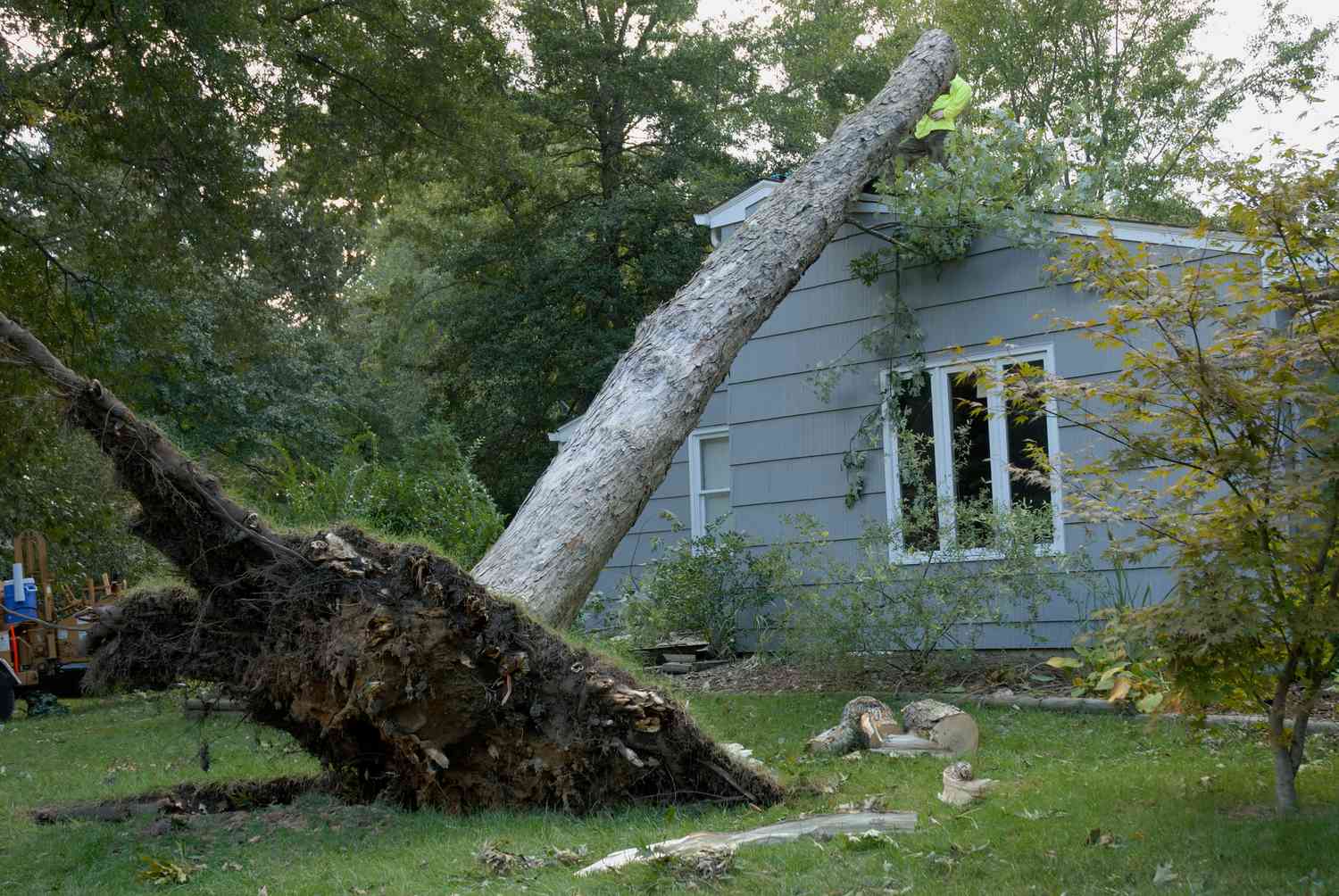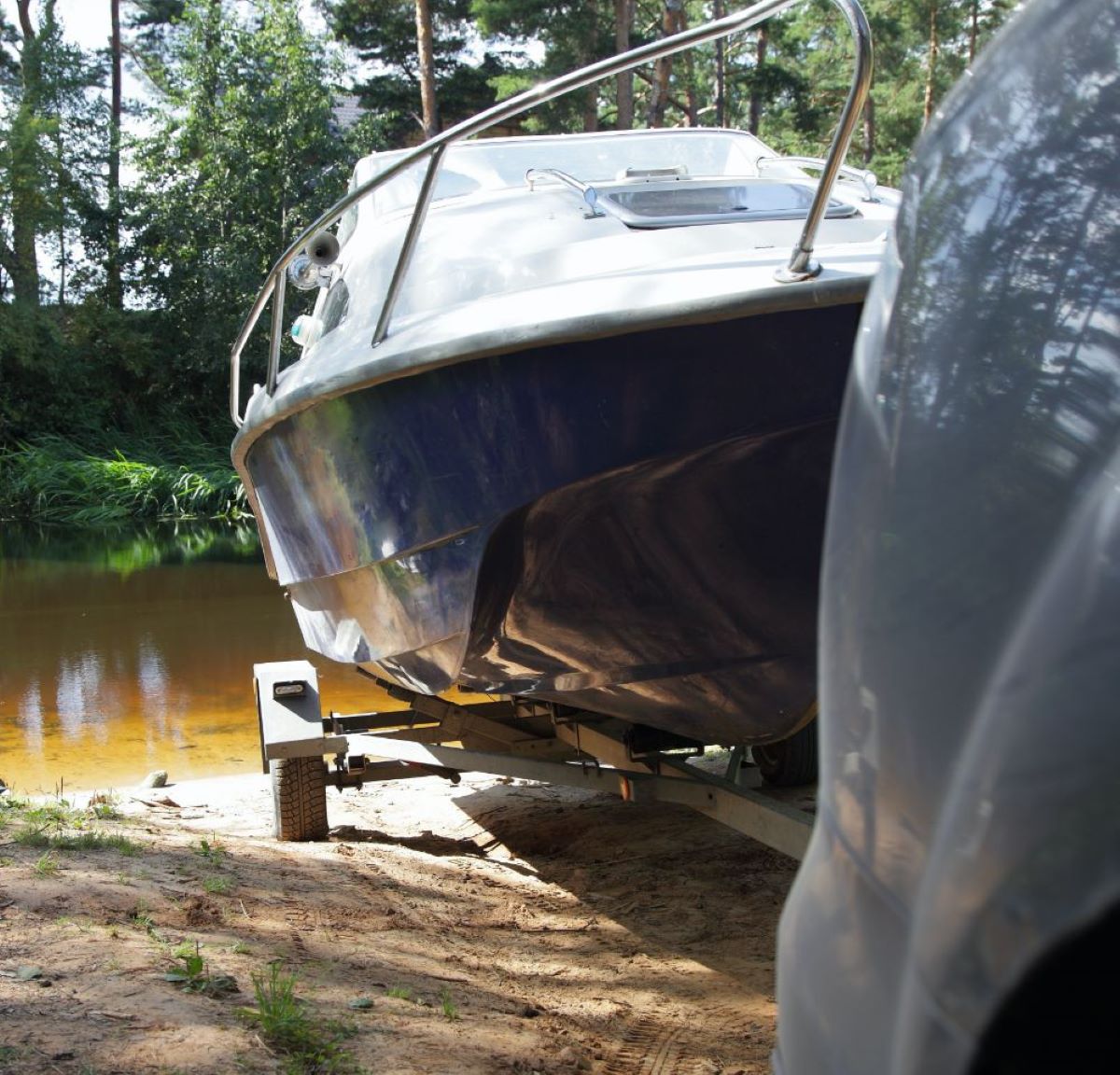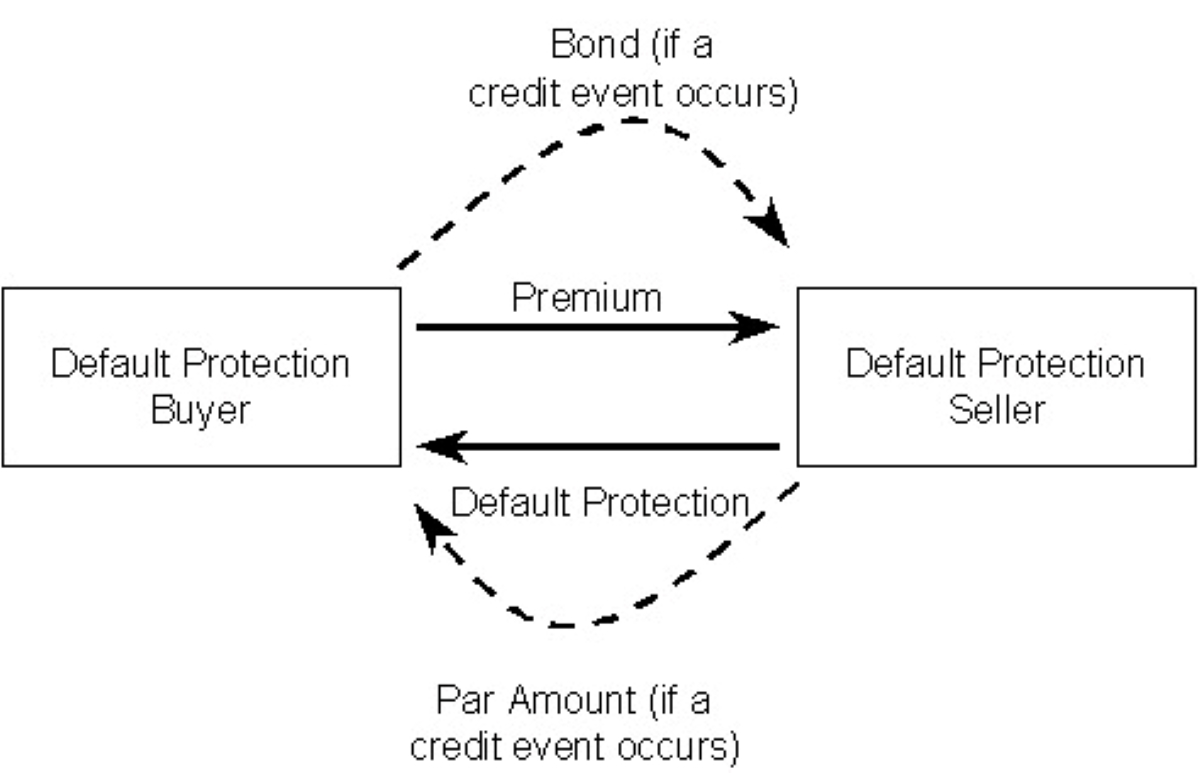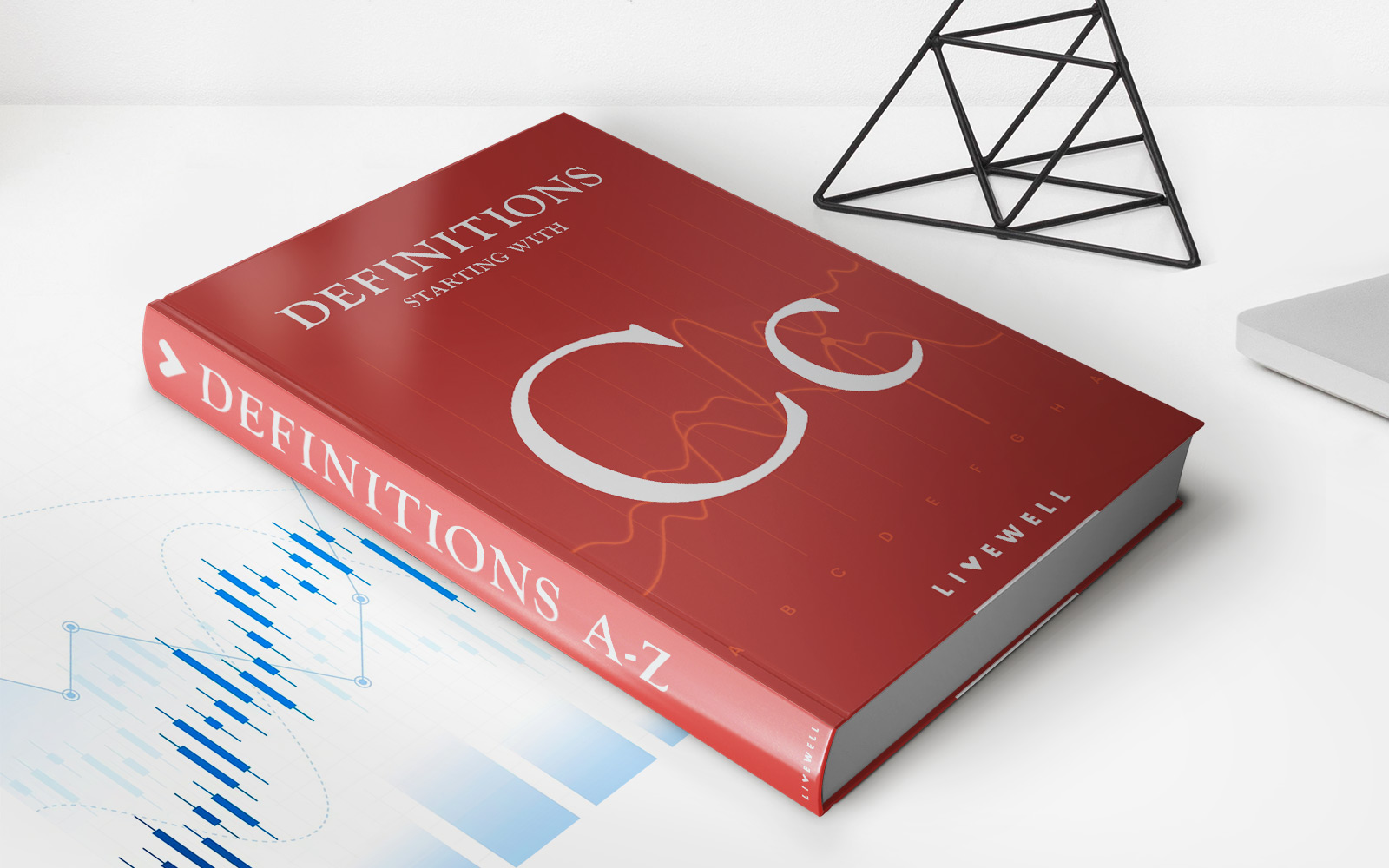

Finance
What Does Windstorm Insurance Cover?
Published: November 10, 2023
Windstorm insurance provides financial protection against damages caused by strong winds, such as property damage and loss of belongings. Ensure you're covered with comprehensive windstorm insurance.
(Many of the links in this article redirect to a specific reviewed product. Your purchase of these products through affiliate links helps to generate commission for LiveWell, at no extra cost. Learn more)
Table of Contents
Introduction
Welcome to our comprehensive guide on windstorm insurance! Living in areas prone to severe weather can be both exciting and challenging. While the beauty of nature is evident, it also brings the risk of windstorm damage to your property and belongings. Worried about the potential financial burden caused by windstorm damage? That’s where windstorm insurance comes in.
Windstorm insurance is a type of property insurance that specifically covers damage caused by strong winds and hurricanes. It provides financial protection and peace of mind in the event of property damage, loss of personal belongings, and liability claims resulting from wind-related incidents.
In this article, we will delve into the details of windstorm insurance coverage, including what it covers, what it doesn’t cover, and how to make a claim. By understanding the ins and outs of windstorm insurance, you can make informed decisions to protect yourself, your property, and your loved ones.
Whether you live in a coastal area prone to hurricanes or in an inland region susceptible to severe windstorms, having the right insurance coverage is essential. Let’s explore the various aspects of windstorm insurance to help you make an informed decision for your protection.
Understanding Windstorm Insurance
Windstorm insurance, also known as hurricane insurance or storm insurance, is a specialized form of property insurance that provides coverage for damage caused by strong winds. It is designed to protect homeowners and property owners from the financial repercussions of wind-related events, such as hurricanes, tornadoes, and severe storms.
When it comes to windstorm insurance, it’s crucial to understand the specific terms and conditions of your policy. Different insurance providers may offer varying levels of coverage, and it’s important to review the policy and clarify any uncertainties before a windstorm occurs.
Most windstorm insurance policies cover both the structure of the property and personal belongings within it. However, it’s important to note that flood damage caused by storm surge is typically not covered under windstorm insurance and requires a separate flood insurance policy.
Windstorm insurance typically covers the following:
- Damage to the structure of the property, including the roof, walls, windows, and doors.
- Damage to detached structures, such as garages or sheds.
- Damage to personal belongings, including furniture, electronics, and clothing.
- Loss of use or additional living expenses if you are unable to live in your home due to windstorm damage.
- Liability protection in case someone is injured on your property due to windstorm-related incidents.
It is important to note that windstorm insurance coverage may vary depending on your location and specific insurance policy. Some areas prone to frequent windstorms may have higher insurance premiums, while others may have added provisions specific to their region’s risks.
Make sure to review your policy’s terms and conditions carefully to understand the extent of coverage provided by your windstorm insurance.
Coverage for Property Damage
Windstorm insurance provides coverage for property damage caused by strong winds, hurricanes, and other wind-related events. This coverage typically includes the structure of the property itself, including the roof, walls, windows, and doors.
In the event of windstorm damage to your property, your insurance policy will help cover the cost of repairs or even the full replacement of damaged structures. This can include repairing or replacing a damaged roof, reinforcing or rebuilding walls, or replacing shattered windows and doors.
It is important to note that windstorm insurance coverage may have certain limitations and exclusions. For example, some policies may have a maximum coverage limit, which means that the insurer will cover up to a certain amount for property damage. If the cost of repairs exceeds that limit, you may be responsible for the remaining expenses.
Similarly, some policies may have exclusions for certain types of property damage. For instance, if the windstorm damage was caused by neglect or lack of maintenance, your insurance company may deny the claim. It is crucial to review your policy and understand the specific terms and conditions regarding property damage coverage.
Additionally, windstorm insurance typically covers detached structures such as garages, sheds, or fences that are on your property. These structures are subject to the same coverage limits and restrictions as the main property. Be sure to document any damage to these structures and inform your insurance company as soon as possible.
When making a windstorm insurance claim for property damage, it is important to provide documentation such as photographs or videos of the damage, as well as detailed descriptions of the extent of the damage. It is also beneficial to keep records of any repairs or renovations done on your property prior to the windstorm, as this can help establish the pre-storm condition of your property.
Remember to consult with your insurance provider to understand the specific coverage limits, deductibles, and requirements for making a claim for property damage caused by windstorms.
Coverage for Personal Belongings
Along with covering property damage, windstorm insurance also provides coverage for your personal belongings that are damaged or destroyed as a result of a windstorm event. This includes furniture, electronics, appliances, clothing, and other personal items.
When a windstorm causes damage to your personal belongings, your insurance policy will typically reimburse you for the cost of repairing or replacing the damaged items. It is important to note that coverage for personal belongings may have certain limits and exclusions, so it’s essential to review your policy to understand the specific terms and conditions.
When filing a claim for personal belongings damaged in a windstorm, it’s important to document the items that were affected. Take photographs or videos of the damaged items, noting the brand, model, and approximate value of each item if possible. This documentation will help your insurance company assess the extent of the damage and determine the appropriate reimbursement amount.
It is also advisable to keep records of receipts or other proof of purchase for expensive items such as electronics or valuable jewelry. This can be helpful in demonstrating the value of the items to your insurance company during the claims process.
Like with property damage, your windstorm insurance may have certain exclusions for personal belongings. For example, some policies may not cover water damage caused by flooding or if the damage to personal belongings was a result of poor maintenance or negligence.
It’s important to understand the specific coverage limits and deductibles outlined in your policy to ensure you have adequate protection for your personal belongings. Adjusting your coverage limits might be necessary if you possess valuable items that exceed the standard coverage provided by the policy.
Windstorm insurance is designed to provide financial compensation for the repair or replacement of your damaged personal belongings, offering you peace of mind and ensuring that you can recover from the losses incurred during a windstorm event.
Additional Living Expenses Coverage
In the aftermath of a windstorm event, your home may become uninhabitable, requiring you to temporarily find alternative housing. This is where additional living expenses coverage comes into play. Windstorm insurance often includes coverage for the extra costs you may incur while living away from your damaged property.
Additional living expenses coverage typically covers expenses such as temporary accommodation, meals, transportation, and other necessary expenses incurred as a result of being displaced from your home. This coverage allows you to maintain your usual standard of living while your home is being repaired or rebuilt.
It’s important to note that the coverage for additional living expenses is typically limited to a certain percentage of the coverage limit for your property. This means that the reimbursement may be subject to a maximum amount or a specific time period, depending on your policy.
When utilizing additional living expenses coverage, it’s essential to keep all receipts and documentation of the expenses incurred. This will help support your claim and ensure a smooth reimbursement process with your insurance company.
It’s also important to bear in mind that additional living expenses coverage is typically only applicable if the damage to your property is covered by your windstorm insurance policy. If you do not have coverage for property damage, you may not be eligible for additional living expenses coverage.
Ideally, it is recommended to review your windstorm insurance policy and fully understand the scope and limitations of the additional living expenses coverage. By doing so, you can ensure that you have the necessary financial support to cover the temporary costs of living away from your damaged property in the aftermath of a windstorm event.
Liability Protection
Windstorm insurance not only provides coverage for property damage and personal belongings but also includes liability protection. Liability coverage is crucial in protecting you from potential lawsuits or claims that may arise as a result of windstorm-related incidents on your property.
Liability protection under windstorm insurance typically covers medical expenses, legal fees, and settlements if someone is injured on your property due to a windstorm event. This coverage extends to both residents and visitors, offering financial protection in case of accidents or injuries.
For example, if a neighbor’s tree falls onto your property during a windstorm and causes injury to a passerby, your windstorm insurance liability protection would likely cover the medical expenses of the injured party. Similarly, if a severe windstorm causes damage to neighboring properties, your liability coverage may help cover the costs of repairs.
Liability protection is particularly important if you live in an area prone to severe weather conditions like hurricanes or tornadoes. These events can cause significant damage and potential harm to others, making liability coverage a critical component of your windstorm insurance policy.
However, it is important to note that liability coverage typically has certain limits and exclusions. It’s essential to review your policy and understand the specific terms and conditions regarding liability protection.
When making a claim for liability protection, it’s important to promptly report the incident to your insurance company and provide any necessary documentation or evidence. This can include photographs, witness statements, or incident reports, which will help support your claim and ensure a smooth claims process.
Having liability protection under your windstorm insurance policy can offer you peace of mind, knowing that you are financially protected in case of injury or property damage to others resulting from windstorm events.
Exclusions and Limitations
While windstorm insurance provides valuable coverage for property damage, personal belongings, and liability protection, it’s important to be aware of the exclusions and limitations that may apply to your policy. Understanding these exclusions and limitations will help you fully comprehend the extent and boundaries of your windstorm insurance coverage.
Common exclusions in windstorm insurance policies may include:
- Flooding: Most windstorm insurance policies do not cover damage caused by flooding or storm surge. Separate flood insurance is typically required to cover these types of water-related damages.
- Poor Maintenance: If the windstorm damage is a result of poor maintenance or neglect, it may not be covered by your insurance policy. Regular upkeep and maintenance of your property are essential to ensure coverage in the event of a windstorm event.
- Earthquakes: Windstorm insurance does not typically cover damage caused by earthquakes. If you live in an area prone to earthquakes, you may need to consider additional earthquake insurance coverage.
- War or Terrorism: Damages caused by acts of war or terrorism are generally excluded from windstorm insurance policies. Separate coverage may be needed for these types of events.
Additionally, windstorm insurance policies may have certain limitations, such as:
- Coverage Limits: Your windstorm insurance policy will have a maximum coverage limit, beyond which you may be responsible for any additional expenses.
- Deductibles: Like other insurance policies, windstorm insurance often includes a deductible, which is the amount you must pay out of pocket before your insurance coverage kicks in.
- Geographical Restrictions: Some windstorm insurance policies have specific coverage areas or apply only to certain regions prone to windstorm events. It’s important to understand the geographical limitations of your coverage.
It is crucial to carefully review your windstorm insurance policy and consult with your insurance provider to fully understand the exclusions, limitations, and any additional coverage options available to you. By doing so, you can ensure that you have the appropriate coverage for protecting your property, belongings, and financial well-being against windstorm-related risks.
Making a Windstorm Insurance Claim
When it comes to making a windstorm insurance claim, it is important to follow a clear and organized process to ensure a smooth and successful outcome. Here are the key steps to consider:
1. Contact Your Insurance Company: As soon as possible after a windstorm event, contact your insurance company to report the damage. Be prepared to provide details about the extent of the damage and any injuries that occurred. Most insurance companies have dedicated claim hotlines that operate 24/7.
2. Document the Damage: Take photographs or videos of the damage to your property and personal belongings. This visual evidence will help support your claim and provide proof of the damage sustained. Make a detailed list of damaged items and their approximate values.
3. Prevent Further Damage: Take immediate action to prevent any further damage to your property. This may include covering broken windows or damaged roofs with tarps or boarding up exposed areas. However, only attempt these temporary repairs if it is safe to do so.
4. Mitigate Losses: Your insurance policy may require you to take reasonable steps to mitigate the losses and prevent further damage. This can involve removing water-damaged items or arranging for professional services to mitigate the effects of the windstorm, such as water extraction or mold remediation.
5. Obtain Repair Estimates: Obtain repair estimates from licensed contractors or professionals who are experienced in windstorm damage repairs. These estimates will be crucial in assessing the cost of repairs and supporting your claim.
6. Review your Policy: Thoroughly review your windstorm insurance policy to understand the coverage limits, deductibles, and any specific requirements for making a claim. This will ensure that you meet all the necessary criteria and provide the required documentation.
7. Submit the Claim: Complete the necessary claim forms provided by your insurance company and submit them in a timely manner. Include all supporting documentation, such as photographs, repair estimates, and any other requested information.
8. Communicate with your Insurance Company: Maintain open and frequent communication with your insurance company throughout the claims process. Stay informed about the progress of your claim, and promptly respond to any requests for additional information or documentation.
9. Claims Adjuster Inspection: Your insurance company may send a claims adjuster to inspect the damage to your property. Cooperate fully during this inspection, providing access to all damaged areas and answering any questions they may have.
10. Keep Records: Keep a record of all communication, including the date, time, and details of each interaction with your insurance company. Retain copies of all documentation submitted and received related to your windstorm insurance claim.
Remember, it’s important to be patient throughout the claims process, as it may take time to assess the extent of the damage and determine your eligible reimbursement. If you encounter any difficulties or disputes, don’t hesitate to escalate the matter to a supervisor or seek professional advice to protect your rights.
By following these steps and engaging with your insurance company in a proactive manner, you can navigate the windstorm insurance claims process effectively and ensure a fair resolution to your claim.
Conclusion
Windstorm insurance is a crucial form of protection for homeowners and property owners in areas prone to severe weather conditions. It provides coverage for property damage, personal belongings, additional living expenses, and liability protection in the event of windstorm-related incidents.
Understanding the details of your windstorm insurance policy is essential to ensure you have the appropriate coverage for your needs. Reviewing the terms and conditions, including any exclusions and limitations, will help you make informed decisions and mitigate any potential gaps in coverage.
In the event of windstorm damage, promptly contacting your insurance company, documenting the damage, and taking steps to prevent further damage are key initial actions. Providing thorough documentation, including photographs, repair estimates, and receipts, will support your insurance claim and facilitate the claims process.
Throughout the claims process, maintaining open and frequent communication with your insurance company, keeping records of all interactions, and following up on any requests for additional information will help ensure a smooth and successful resolution to your windstorm insurance claim.
Remember that windstorm insurance is designed to provide financial protection and peace of mind in the face of unpredictable and potentially damaging weather events. By securing the right coverage and understanding the intricacies of your policy, you can protect yourself, your property, and your loved ones from the financial burdens that may arise from windstorm damage.
Take the time to review your windstorm insurance policy today and make any necessary adjustments to ensure you have adequate protection. In doing so, you can face future windstorms with confidence, knowing that you are prepared and protected.














